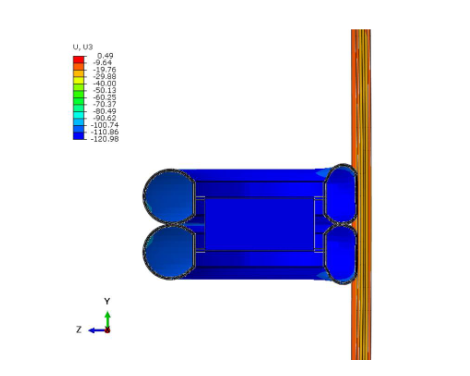Experimental and Numerical Characterization of Input Forces in Glass Curtain Walls under Soft Body Impact

Abstract
For structural design purposes, complex full-scale mock-ups and experiments are often required to assess the dynamic performance of glass curtain walls and facades under soft body impact. The test protocol (based on the use of twin-tyre or spheroconical bag impactor types) represents a key design step to satisfy, to ensure the protection of building occupants. Besides, soft body impact effects commonly need to be verified with the support of cost-time consuming experimental procedures. The major intrinsic uncertainty is the description of the force-time input function for the target facade (and thus the expected effects), and its variations with impact characteristics (i.e., type of impactor, impact energy) or facade features (i.e., target region, etc.). The present study aims at overcoming these issues and possibly support a computationally efficient, but still refined, numerical analysis of glass curtain walls under soft body impact. A primary advantage is taken from a set of original experiments carried out on full-scale facade samples, under the effect of
twin-tyre or spheroconical bag impactors (with up to 160 impact configurations). Differing from earlier efforts, the experimental setup is characterized by the implementation of a set of pressure sensors that are used to track the evolution of impact surface and time history of impact force on glass. To further explore the experimental findings, a Finite Element numerical analysis is carried out in Abaqus. The presented results show in general a rather close agreement of displacement peaks – with an average scatter of about 10% for the twin-tyre and 25% for the spheroconical bag configurations – and confirm a high sensitivity to impact features. In addition, a satisfactory agreement is found between the measured time histories of impact force and the corresponding imprint surfaces on glass, especially for the twin-tyre impactor. Such a result can support the elaboration of even more efficient modelling strategies (i.e., 2-DOF approach) that could help optimizing further the analysis and design of glass curtain walls under soft body impact.
Published
Issue
Section
Experimental & Numerical Investigations
License
Copyright (c) 2024 Nicola Cella, Guido Lori, Chiara Bedon, Giampiero Manara

This work is licensed under a Creative Commons Attribution 4.0 International License.



